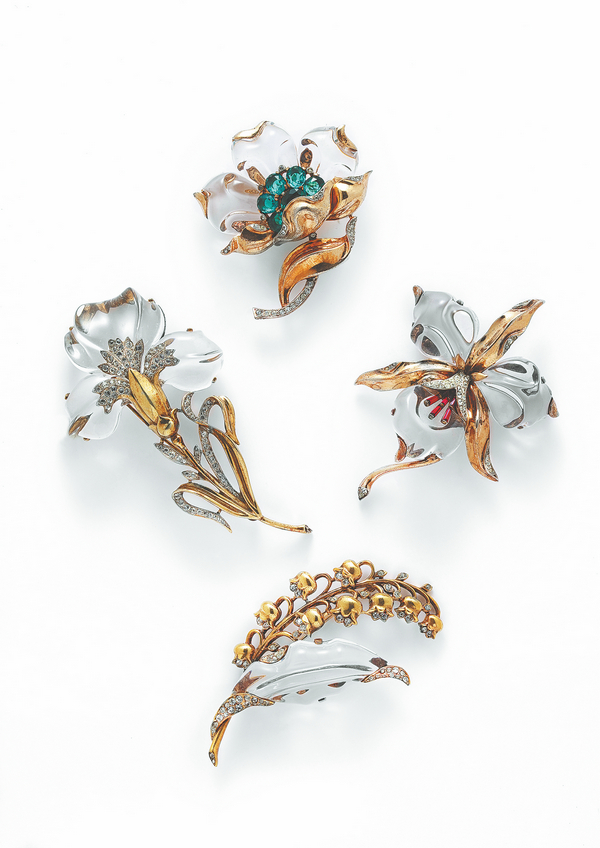

At the Shanghai History Museum, an exhibition of 1,000 vintage brooches artfully illustrates the shifts in trends over the past century.
They have been collected over the course of a decade by Zheng Yingyan, and at one point, she owned more than 3,000 of them.
These items of personal expression have long been used to convey a range of ideas, from individual taste and social standing, to more general political, social, and cultural concepts.
Brooches made between the 1920s and the '80s were generally made of synthetic materials and exemplify the use of sophisticated jewelry-making techniques.
"What fascinates me is the history and stories behind them," Zheng says, adding that she decided to use her collection to examine the changing ideals of the century through the rise of fashion jewelry from an Eastern perspective.
As the brooches' temporary keeper, she chose to present her collection to the public in chronological order so that visitors can get a sense of how ideas of beauty change over time.
The exhibition is divided into six sections, each documenting a specific period in the development of brooches.
Most have a past. One example is the Jelly Belly series produced in the United States by Trifari.
Set up in 1925 by Giovanni Trifari, the company was known for its stylish designs and quality construction, and capitalized on the increased interest in costume jewelry during the Depression, when many women couldn't afford real jewelry.
During World War II, factories — including those that made fashion jewelry — were commandeered for military use. Trifari was tasked with fitting fighter aircraft windshields, in addition to making military insignia.

The windshields were made out of a clear plastic called Lucite, a material that was plagued with faults. As even a minor flaw leads to them being discarded, Trifari turned waste windshields to ingenious use, meticulously reshaping the material to resemble crystal. These affordable new Lucite pieces, the popular Jelly Belly series, were once cult classics, and some even incorporated Chinese motifs, which were popular at the time.
The company made its first foray into Eastern style in 1942 with its Ming collection. Using red enamel, imitation jade, and rhinestone, Trifari boldly interpreted elements like the tiger, dragon, the mandarin duck and the ax to conjure up an interpretation of Ming Dynasty (1368-1644) design.
Zheng began collecting brooches out of professional need. As a former China Central Television host, she was not allowed to wear necklaces or bracelets on air, but was permitted to wear brooches. "Starting then, I developed a huge interest in the beauty of brooches."
She says that her deep affection also stems from the belief that the brooch is a reflection of one's inner self, and takes on deeper societal and personal meanings.
"People often ask me which of my numerous brooches is my favorite, and I always reply that it's the one I am wearing," Zheng says. "This has nothing to do with its price, but rather the fact that it expresses my mood and feeling on the day, which I believe is the most important factor."
The exhibition, which has attracted lots of interest, opened on Sept 25 and runs until Feb 25.
Zheng Zheng contributed to this story.